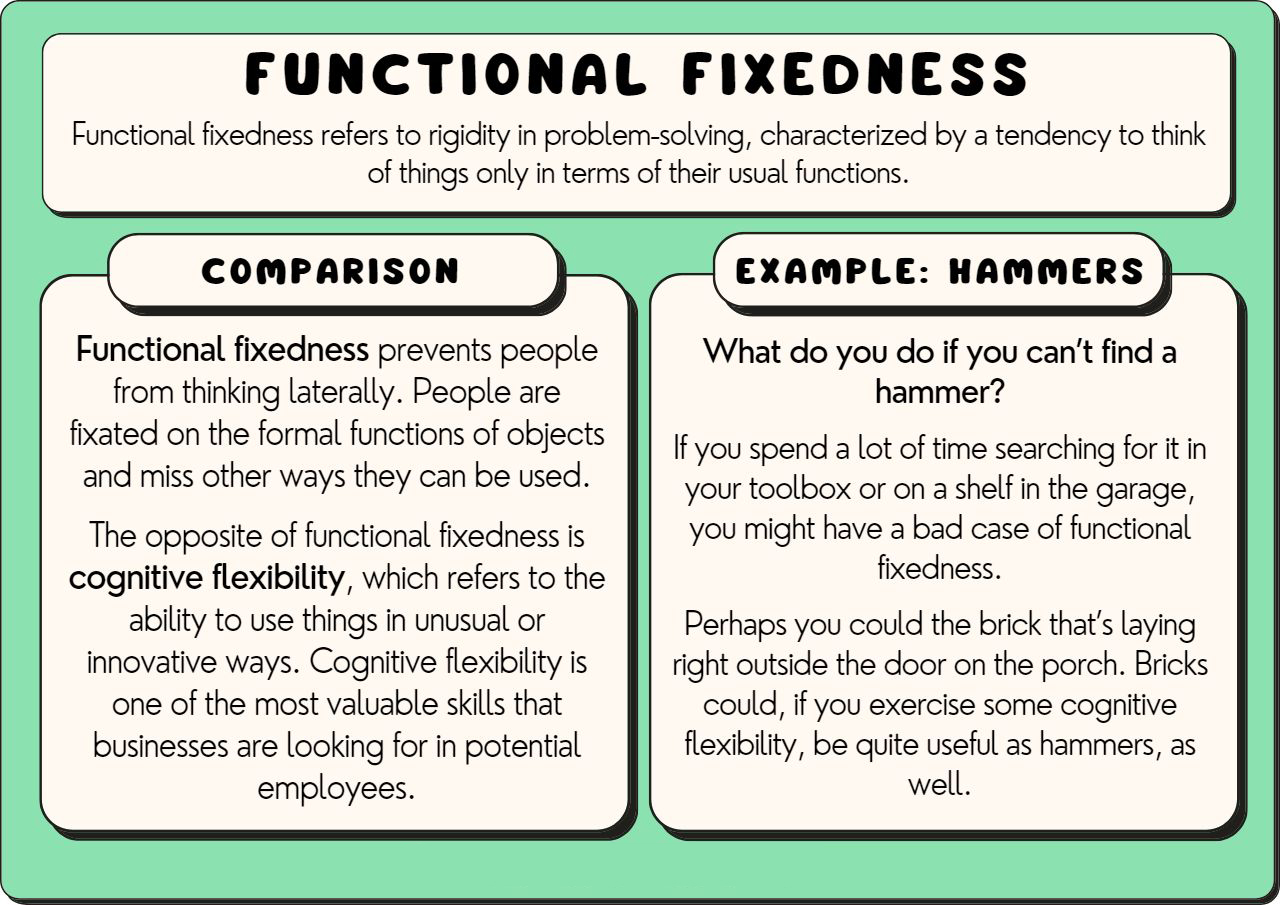Functional fixedness is a cognitive bias that occurs when individuals are unable to see new uses or functions for an object or tool beyond its established purpose. People tend to focus on the conventional, intended function of an item and overlook its potential for creative and alternative uses.
Explanations:
Functional fixedness is linked to the way the brain categorizes objects and tools based on their primary functions. This bias can limit creativity and problem-solving by restricting the consideration of unconventional applications.
Examples:
Household Objects: People may struggle to find alternative uses for common household items, such as a paperclip or a clothespin.
Tools: Individuals might overlook the potential uses of tools in settings or situations different from their intended purposes.
Everyday Items: Someone might fail to realize that a smartphone, in addition to communication, can be used as a flashlight, level, or magnifying glass.
Solutions:
Divergent Thinking: Foster divergent thinking and creativity by encouraging individuals to explore multiple uses for objects and tools.
Problem-Solving Exercises: Engage in problem-solving exercises or games that challenge functional fixedness, encouraging creative thinking.
Team Collaboration: Collaborate with others to brainstorm alternative uses for objects, benefiting from diverse perspectives.
Mental Flexibility: Develop mental flexibility by actively questioning the intended function of objects and tools, seeking unconventional applications.
Addressing functional fixedness involves recognizing the natural tendency to fixate on an object’s intended use and actively promoting creative thinking, problem-solving, and collaboration to discover new and innovative functions for objects and tools.
